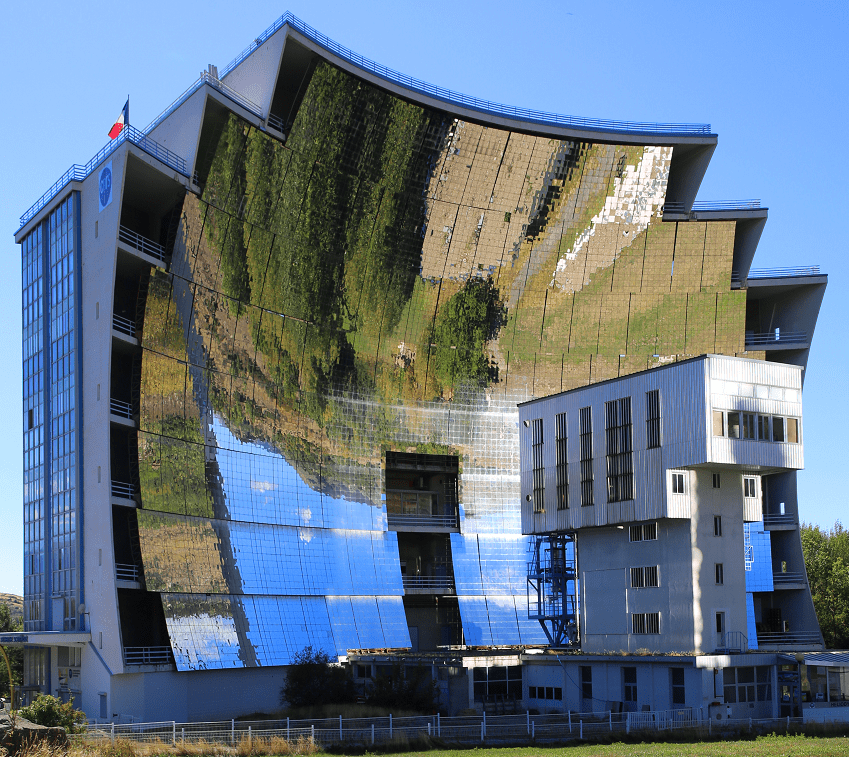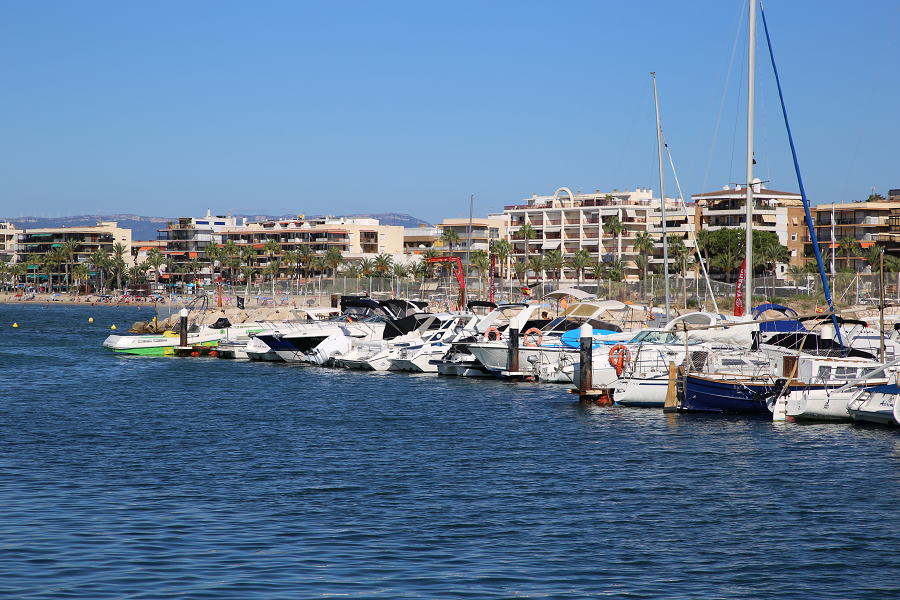The Odeillo solar furnace (Heliodyssee-Grand Four Solaire of Odeillo) is the world’s largest solar furnace. It is situated in Font-Romeu-Odeillo-Via, in the department of Pyrénées-Orientales in Occitania, in the south of France (Pyrenees mountains).
It is 48 metres high and 54 metres wide, and includes 63 heliostats. It was built between 1962 and 1968, started operating in 1969, and has a power of one megawatt.
It serves as a science research site studying materials at very high temperatures.
The Odeillo solar furnace was founded by Félix Trombe, a French chemist, physicist, speleologist, and one of the pioneers of solar energy in France. He began working on experiments with the concentration of light rays in 1947 using a large air defense searchlight.
At the end of the Second World War, Félix Trombe – together with Marc Foex and Charlotte Henry la Blanchetais – began to study materials using what was available on hand. The projector had a lamp and a parabolic reflector. It turns out that to illuminate an airplane from a distance of 5 to 10 km, you need a reflector with a shape almost identical to that of the sun, which is very far away from us. He succeeded in obtaining authorization to use this military equipment. This is what you can see in Batman – it’s the same projector!
In 1949, Félix Tromb led the prototyping of the 50-kW solar furnace at Mont-Louis in the Pyrénées-Orientales, and then in 1962, he created the large 1,000 kW furnace at Odello. The furnace is best known for its research into the very high temperatures associated with solar energy.
Principle
According to Emmanuel Guillot – Director of the solar furnace laboratory at Font-Romeu-Odeillo, when sunlight hits the mirrors, it concentrates in a small point with a temperature of 3,000 degrees Celsius. Any object made of combustible material that touches this spot instantly ignites, and pieces of heat-resistant steel melts in a matter of seconds.
The principle of reflection are used – the rays are concentrated by reflecting mirrors. A solar oven uses two different sets of mirrors to perform the two necessary optical functions: collecting, or capturing, and then concentrating the sun’s energy.
The sun’s rays are first reflected by a first set of mirrors – the “heliostats” – and then sent to a second set of mirrors, the “concentrators” that arranged on a parabola. It then converges on a near-circular target at the top of a central tower.
The sunspot concentrated on this target is about 1 m in diameter and at its center has been measured to have a power equivalent to “10,000 suns” or 10,000 kW/m2.
Structure
This is the National Center for Scientific Research (le Centre National de la Recherche Scientifique, CNRS), whose mission is to identify, carry out or commission (alone or with its partners) any research of interest to the advancement of science and the economic, social, and cultural progress of the country. It is the main research organization in France.
It reports to the French Ministry of Higher Education and Research. The CNRS contributes to the influence of French research throughout the world through its 80 international laboratories and its 8 representative offices abroad: Washington DC, Brussels, Rio de Janeiro, Pretoria, New Dalí, Beijing, Tokyo, and Singapore.
About 150 scientists work in the center. The advantage of research is that there are no polluting elements, since the objects that are being investigated are heated only by radiation.
The furnace is closed for public.
Address: 7 Rue du Four Solaire, 66120 Font-Romeu-Odeillo-Via, France.
Photo: Alex Monroe
How to get to?
From Paris: 9 hr 9 min (859 km) via A20
From Toulouse: 2 hr 33 min (182 km) via N20
From Andorra: 1 hr 29 min (72.1 km) via N20
From Barcelona: 2 hr 16 min (171 km) via C-16
From Madrid: 7 hr 56 min (731 km) via A-2
See here Pyrenees travel guide
See here France travel guide
See here Spain travel guide






















